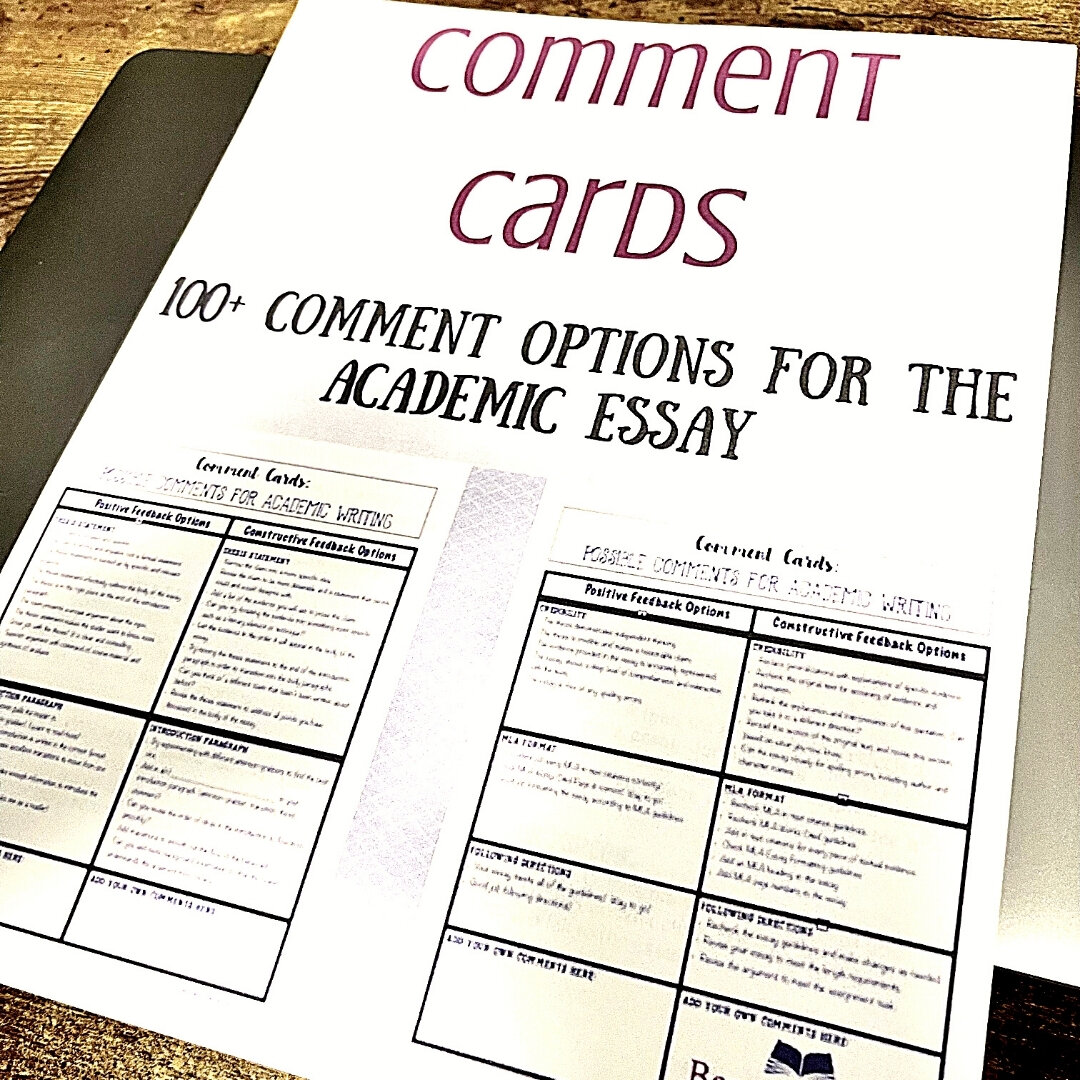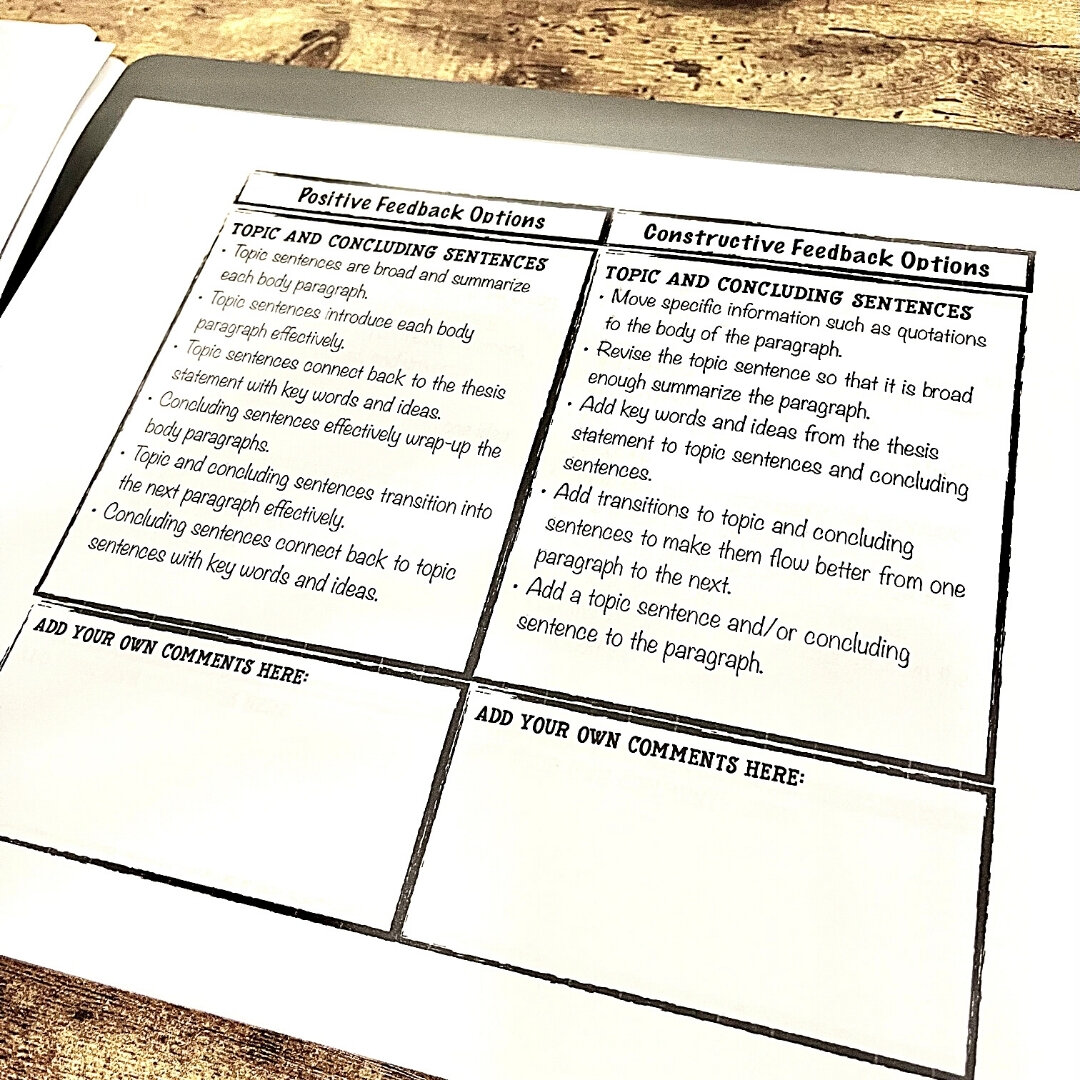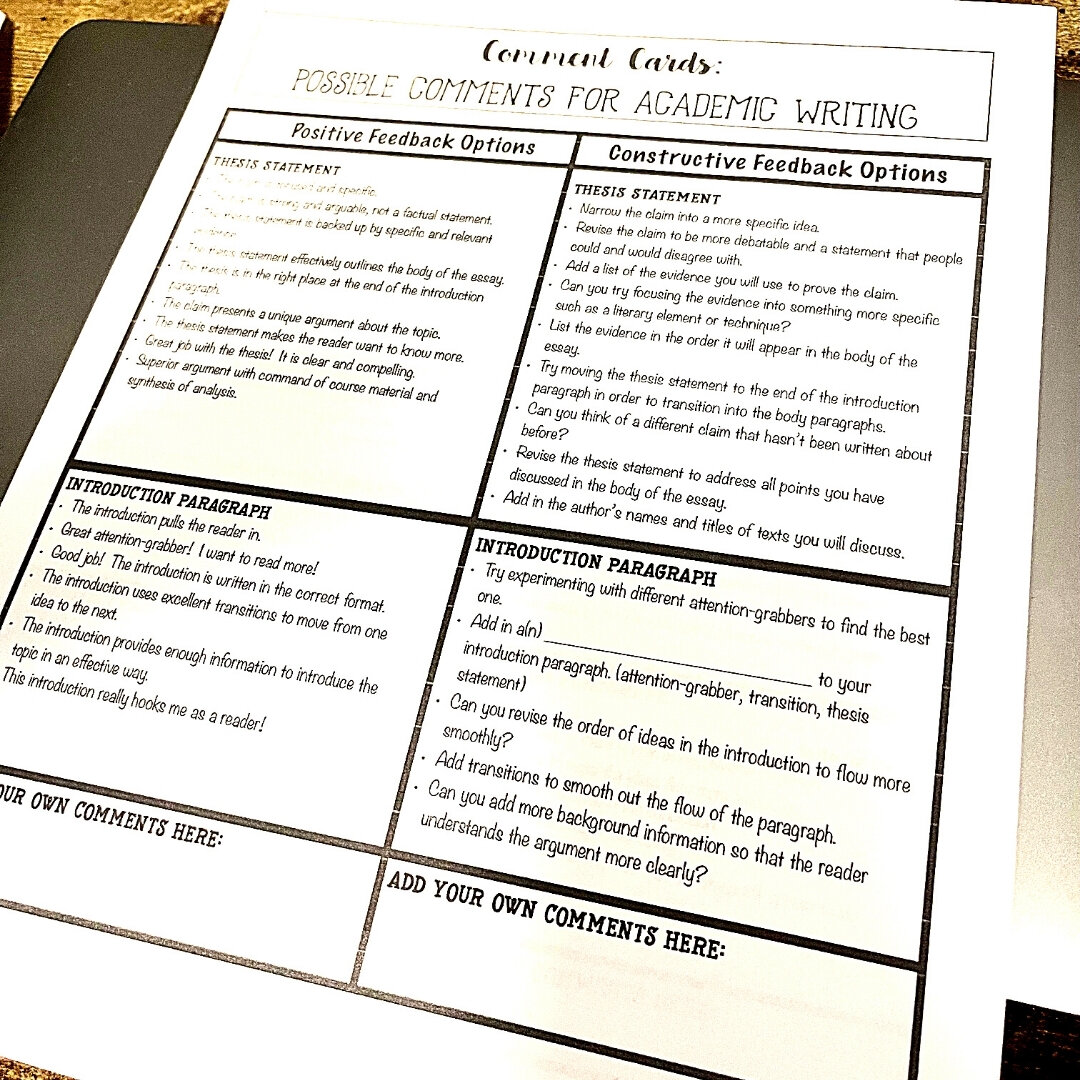Three Strategies for Providing Feedback on Student Writing
Grading essays, or any written work for that matter, can be time consuming. So, as writing teachers, it’s important that we find efficient strategies for being able to provide constructive feedback but in a timely manner.
Here are three strategies for providing high-quality feedback on student writing.
Strategy One: Actionable Items
While rubrics are helpful for providing feedback, they don’t really help students better their writing unless they provide actionable revisions and edits that the student can implement to make a piece of writing stronger and more effective. Giving feedback in the form of actionable steps can give students specific steps to take to make their writing stronger.
Here are some examples of typical feedback versus giving actionable items:
“Attention-grabber is missing” versus “Try using a startling fact at the beginning to hook the reader.”
“Sentence fragment” versus “This sentence needs an independent clause. Please add one to it.”
“The explanation lacks depth” versus “Explain the irony of the quote and how it connects to theme.”
As you can see, there is a distinct difference between pointing out mistakes versus actually helping a student make an essay better. Whenever I use this strategy, I require that students go back to the comments and make changes based on the actionable items. Sometimes, I will even go back and add extra points to an essay grade for making changes.
If you would like for students to use this same strategy during peer revision, check out this bundle of Peer Revision Feedback Cards that give students specific feedback options worded as actionable steps for editing and revision.
Strategy Two: Rubric + Three
As we know, rubrics are essential to grading writing. They help us situate a piece of writing into a score but also communicate to the writer where points were lost. However, a rubric does not tailor feedback to a student’s specific essay. This is where the “Rubric + Three” feedback strategy comes into play.
For this strategy, teachers mark the rubric but then also add three tailored comments to targeted areas in the essay. These specific comments can really help a student “see” the precise areas where improvement is needed. I think it is absolutely crucial for at least one of those comments to be positive. Students tend to respond better to positive feedback rather than negative feedback. So, if you mark up every single error on an essay, you risk shutting the student down and killing a student’s efficacy to keep going and to keep trying. So, three targeted comments can be effective because students can digest it.
Strategy Three: Student Grade + Teacher Review
For this strategy, the grading process is flipped. Students actually grade their own essays using the rubric and turn in the student-graded essay to the teacher. This process forces students to think about the rubric and self-assess their writing. It can be really powerful when students rate their own essays because they are forced to pay attention to the grading criteria because, in reality, students aren’t so consistent with looking over rubrics. You can also require that students add comments to their own writing where they deducted points in order to substantiate their scores.
After the student turns in the self-graded essay, the teacher’s role is to review the grade and then either agree with it as marked, or change the grade. I typically find that students are much harder on themselves than I am and that I end up raising their scores. Students get excited about this and tend to like this kind of feedback process. When using this strategy, I like to dialogue with students and respond to their comments in order to further extend the feedback they receive.
What other feedback strategies would you recommend?
Please leave us a comment. We’d love to hear from you!
Related Resource
About the Author
Meredith is the founder and creator of TeachWriting.org and Bespoke ELA. She has taught high school English for 10+ years in Dallas, Chicago, and New York City and holds a M.A. in Literature from Northwestern University. She has always had a connection to the written word-- through songwriting, screenplay writing, and essay writing-- and she enjoys the process of teaching students how to express their ideas. Meredith enjoys life with her sweet daughter and Yorkie.






